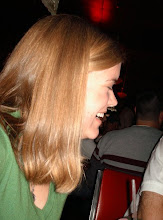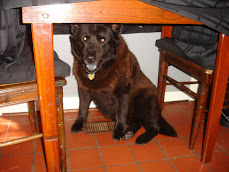Yesterday was a super exciting day at the ol' directed study because we got in a bunch of supplies and materials. It was like Christmas, only instead of toys and games, Santa had brought boxes of folders and protective covering for photographs. It was really nice to be able to spend the whole day putting everything in nice, protective plastic. This also gave us the chance to look over the collection again, because its always important to know your materials before you start the cataloging process.
In addition to getting everything into protective cases, my directed study buddy, Latoya and I discussed the possibility of making some type of exhibition. Nothing too fancy or complex, just a little one so we could get some experience putting one together. The collection we are working with presents two different topics for display. The first, which I think would just look great, is a display of the large collection of sheet music that is part of the collection. I think we could pick maybe 20 pieces and make a really nice display. The other idea was to make a display with all the head shots of radio personalities and call it "Voices of Black Radio." I like both ideas and we might be able to make two displays. I think they could be very useful in promoting the museum and getting the word out.
Making a display would, I think, be very interesting and great practice for the future. We would get to discuss what types of materials would work best for our given topic, learn how to construct the display, and do research on the particular topic. I hope that before the end of the semester, we will be able to at least do one small display.
Tuesday, September 29, 2009
Friday, September 25, 2009
Week One, Day Two- September 25

Today at the Birmingham Black Radio Museum I developed a unique identifier system for the collection. I began by looking at a system that is used at the Hoole Special Collection to see if it could be a good jumping off point to begin the development of one that would work for the collection. The Hoole system is made up of three parts, the first number is used for the identification of the type of material being cataloged, whether it is a photograph, recording, or manuscript. The second number identifies the collection name, like the Wade Hall Small Collection. The last number is the used to identify a specific item in the collection. There is also a fourth number, but it is only used if an item is more than one page long if it is a manuscript or if it is over one tape long if it is a recording. The final number for an item in the collection looks something like this 0003_000056_000001_0001. If I wear looking at this unique identifier, it would tell me all the basic information I would need to know, what kind of item is it, what collection does it belong to, and how long it is.
Using this as a jumping off point, my directed study buddy, Latoya, and I began brainstorming what kind of information would be important to include in the unique identifier for this collection. While talking with Bob Friedman, he informed me that he would like to see each radio station have its own collection, so we began the number with the four letter call sign of each radio station. The next piece of information that needed to be address in a unique identifier is the type of material being cataloged. The material type will be identified with a four digit number to correspond with each material type in the collection, manuscript, photograph, voice/ sound recording, newspaper clipping, and so on. Next, each decade will be broken down within the collection to make almost a mini collection within the larger one of the radio station. Bob asked if this could be done to make using the materials by year easier for anyone doing research. The unique identifier system at Hoole does not have any numbers that correlate with the year the item was created, but I believe that is because their collections are so far ranging that putting the year in the collection would not make sense or work for them. The last number in the collection will used to identify each item within each collection. This number will be eight digits long to ensure that the collection never outgrows the numbering system. There is also a final, four digit number that will be used only if an item has more than one page.
I think the most important thing I learned today while developing this numbering system was to really think about what types of materials you are trying to catalog and organize and then use that information to inform your system. If I had just used the same system as the one at Hoole, I would have had a hard time making it work for this collection and its specific needs. I think as we work more with the materials and prepare them for the creation of metadata, we might have to change the system a little, but as I see it now, I think it will work well with the collection and serve all the needs the collection will have for a unique identifier system.
Tuesday, September 22, 2009
Week One, Day One- September 21

Today was my first full day at what will become the Birmingham Black Radio Museum. My directed study buddy, Latoya, and I spent the day going through much of the collection to get a feel for what we would be working with for the next semester. We went through so many folders of photos and letters! A good deal of the materials had names and a few had dates, but the museum project director, Bob Friedman said that he knew who almost everyone was in the photos or he would be able to find out. It will be so nice to have a resource that will be able to identify a great majority of the people related to the collection.
As we went through the collection, we took note of what types of materials and what would be needed to organize and preserve them. Most of the collection is made up of photographs and luckily, none of them seem to be too deteriorated, so hopefully once we get them into protective casing they will last a long time.
After we finished going through everything to get a feel for what was there, we made a list of tasks that we need to complete to get a good start of the collection becoming a museum and being useful for researchers.
1. Organize and group like materials
a. By radio station
b. By decade
2. Place in protective cases and folders
3. Develop a unique identification system for the collection
4. Migrate materials into new technology
5. Begin to catalog
6. Create metadata
7. Scan materials into a computer
I’m not sure how far we will get in this list over the course of the semester, but I think that we will be able to at least organize the materials, develop a unique identification system, and being the process of cataloging and creating metadata. I really want to get to this stage in the process because it is my favorite part of the archival process as the metadata opens the materials up to be searched and used to their full extent.
I think in order to get the most out of this experience; it would be good for me to read some materials about the creation of unique identification systems in order to create the best one for this collection. If might also be very helpful to find out as much about the history of black radio in Birmingham. This would give me a better idea of what I was looking at when we get to the creation of metadata because you always want to know as much about a collection as possible before arriving at this stage.
Thursday, September 10, 2009
I'm Ready!!!
Next week, I really get to start my directed study. I can't wait. When I first visited the future Birmingham Black Radio Museum, I was a little nervous, but the closer I get to starting, the more excited I am about the whole experience. I am currently in a class about archives and today we had a great guest speaker from the Paul W. Bryant Museum. Hearing him talk about the museum and all their collections really got me excited about working to get this project started. I know its a very long way away from being as good as the Bryant Museum, but it was really interesting to see what might be.
Subscribe to:
Comments (Atom)

